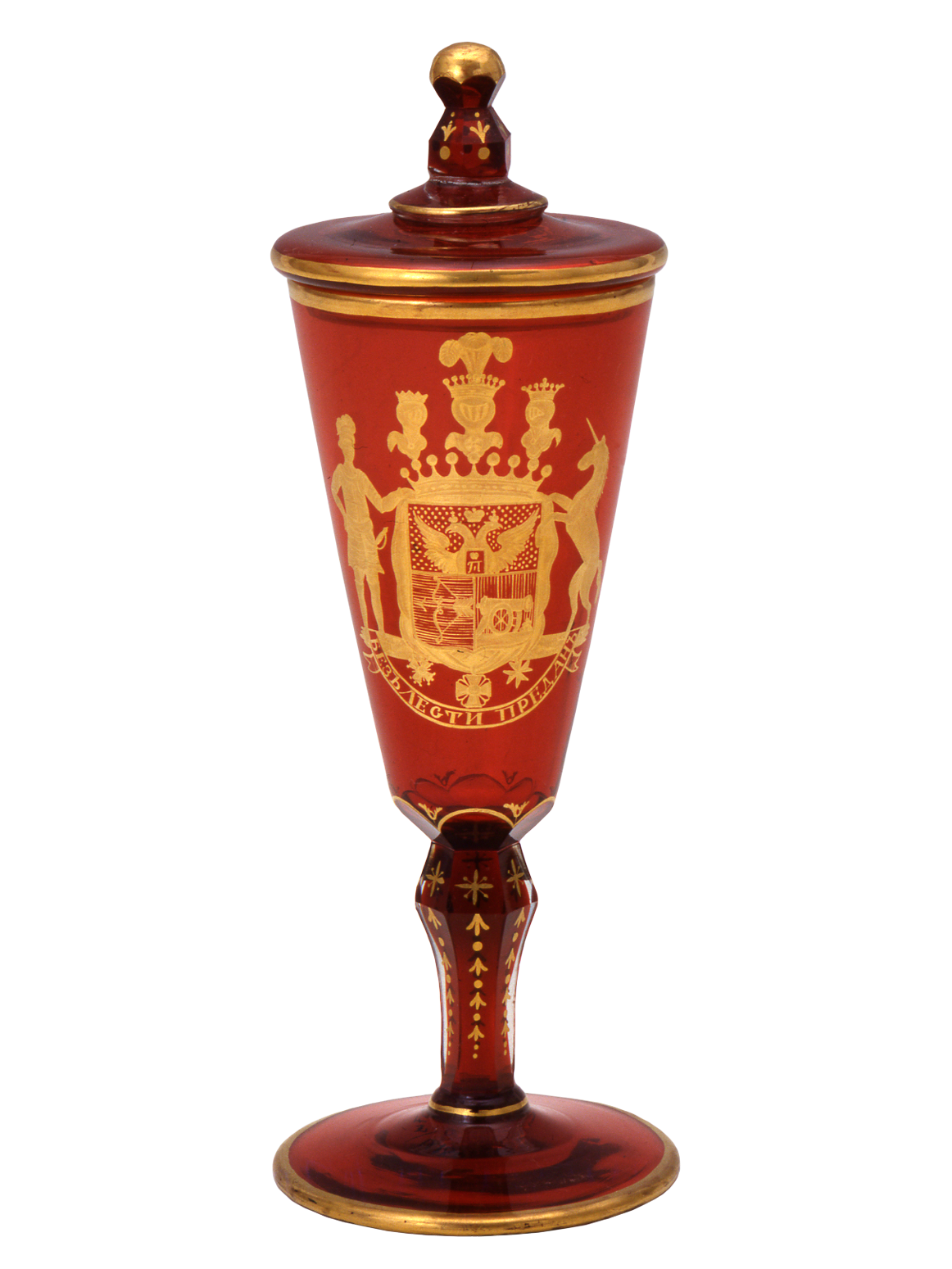CUP WITH A LID WITH THE EMBLEM OF ALEXEY A.ARAKCHEEV

Alexey A.Arakcheev (1769–1834) was a Russian statesman and military leader, favorite of Paul I and Alexander I, Count (1799), Commandant of St. Petersburg (1796), Quartermeister-General of the Russian army (1797–1799), Inspector of artillery (1799), General of artillery (1807), War Minister (1808-1810), the Head of the Imperial Chancellery (1812) and military settlements (1817). He was an active implementer of reforms of Paul I in the army, introducing the principles of rigid mechanical discipline of Prussian type. When the coat of arms of Count Arakcheev was being approved Paul personally added to it the words "Loyal without Flattery".
More information...Imperial glass factory was a leading glass production of the Russian Empire. It Several times changed its location, owners and names. The history of the plant begins in 1735, when the Dutch merchant Willim Elmsel built a glass factory on the Fontanka river in St. Petersburg, which later received its name. Here were transferred workers and equipment from the Yamburg factory (Yamburg factory belonged to Alexander D.Menshikov, after his disfavor it was rented by W.Elmsel). After the death of W.Elmsel in 1738, the plant was signed over to the Treasury and was named the St. Petersburg state and was run by the Palace office. In 1774 it was transferred to the village of Nasia of Shlisselburg ouyezd (county) (and was called Nasia plant). In 1777 the plant was transferred to Prince Gregory A.Potemkin for "eternal and hereditary possession". In 1783 the Prince moved it to the village of Ozerki, four miles away from St.Petersburg. After death of Potemkin in 1792, the plant was again transferred to the state management and became known as the Imperial. In 1890 it ceased to exist independently and became a part of the Imperial porcelain factory.
